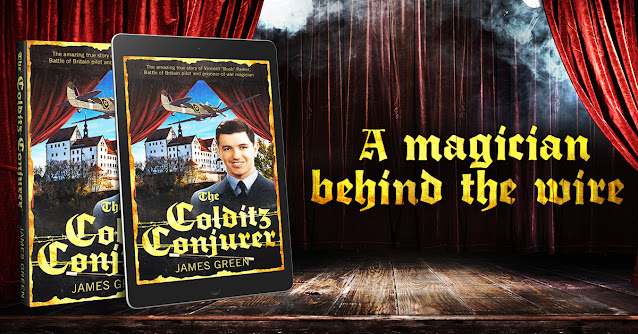Louis Van Dyck joins the Belgian resistance
Born into a family of traveling fairground performers specialising in magic, Louis Van Dyck (1897-1959) appeared on stage from an early age. After his father died suddenly at the age of 44, Louis' mother Elisabeth took on the act. To appear less Flemish, she changed the family's stage name to Vanda (and later Wanda). Newly billed as Les Vanda Illusionnistes, Elisabeth, Louis, and his sister Jeanne, toured Belgium and France with their trio magic act until the onset of World War One.
Louis Van Dyck - child magician
(Source: Suzy Wandas: The Lady with the Fairy Fingers, 2019)
Les Vanda Illusionnistes - Elisabeth, Jeanne and Louis Vanda
(Source: Public domain)
After Louis turned eighteen, he volunteered for the Belgium Army. He completed two months of basic training in France, before being sent to the front in 1916. He served with the 3rd Regiment of the Line in Belgium's 1st Army Division, experiencing the horrors of trench warfare first hand. In the end, the harsh reality of war was too much for Louis and in late 1917 he went absent-without-leave for a month or so, before reenlisting with the 22nd Regiment of the Line. Although injured in the final few weeks of the war, he survived two years in the trenches. He was awarded the Volunteer Combatant's Medal 1914-1918 for his service.
Scarred by his experience of war, Louis had no interest in returning to the stage after Belgium's liberation. Instead, he went back to the transient life of the fairgrounds, running a shooting gallery and photograph stall.
Germany invaded Belgium again on 10 May 1940. A fortnight later, the beleaguered nation surrendered, starting four more years of occupation.
Wanting to play his part in overturning the Nazi regime and freeing his country, Louis Van Dyck joined the armed resistance group, the White Brigade.
(Source: Suzy Wandas: The Lady with the Fairy Fingers, 2019)
The White Brigade was a Belgian resistance group, founded in the summer of 1940. It started-up in Antwerp, but expanded to have smaller branches in Belgium's other major cities and in the coastal region.
The group aided the Comet Line, a secure route to help shot-down Allied pilots to return to Britain. And, it protected Jewish families, using their network of informants and saboteurs to evade the German occupiers.
Louis would also have taken part in distributing anti-German propaganda (including the group's own underground newspaper), creating lists of collaborators and organising patriotic demonstrations on key Belgian public holidays.
During Nazi Germany's repression of Belgium in 1942-1944, 400 of 3,750 members of the White Brigade were killed. Others were arrested and sent to German camps. Louis' chance of survival was 1 in 10.
Despite their heavy losses, the White Brigade and other resistance groups, helped the British Second Army capture the Port of Antwerp intact in 1944. The resistance fighters gathered military information on the docks ahead of the attack and prevented the Germans from scuttling the facilities’ infrastructure.
Additionally, the White Brigade acted as a scouting and intelligence network for the 4th Canadian Armoured Division, which played a key role in the liberation of Belgium in early September 1944.
With good luck, Louis also survived World War Two. For his contribution to Belgium's fight for liberation from the Nazis, Louis Van Dyck was awarded the Resistance Medal (1940-1945). He died in 1959.
I have compiled this blog from several sources, but my research was kick-started by reading Christ and Kobe Herwegen's excellent book, Suzy Wandas: The Lady with the Fairy Fingers (2019). Although focused on Suzy Wandas' life, the book provides new detail on Louis, that has not been previously published.
When Louis went off to fight in World War One, his mother and sister toured as the Wanda's Sisters (even though they were a mother-and-daughter double-act). They specialised in manipulation effects, interspersed with violin playing and general magic tricks. Over time, Jeanne adopted the stage name Suzy Wandas and eventually took to the stage on her own, achieving worldwide success. Suzy performed for Allied troops during World War Two, which I'll write about in a future blog.
*** AVAILABLE NOW ***
The Colditz Conjurer tells the amazing true story of Flight Lieutenant Vincent ‘Bush’ Parker, Battle of Britain pilot and prisoner-of-war magician.
Written by the Magic at War team, The Colditz Conjurer is a remarkable tale of perseverance, courage and cunning in the face of adversity. It features over 55 original photographs and maps. 126 pages.












Comments
Post a Comment